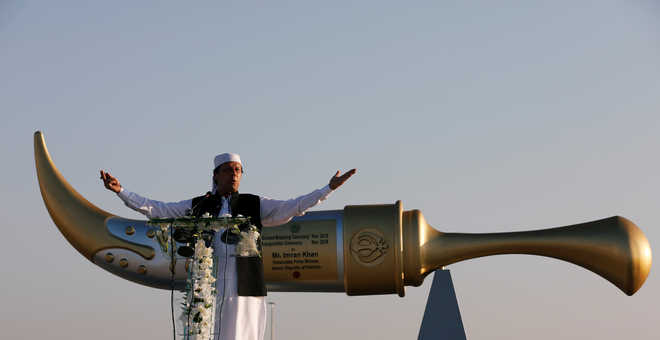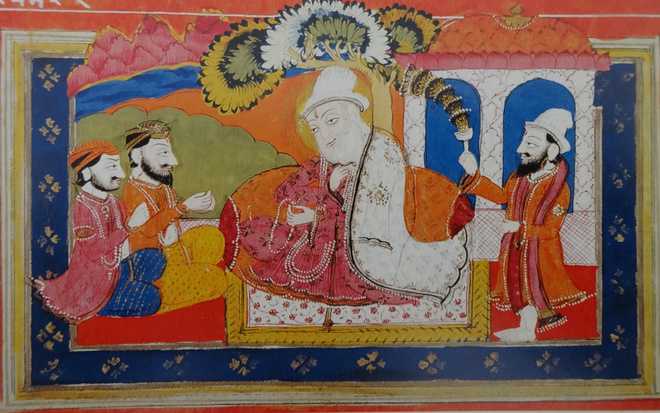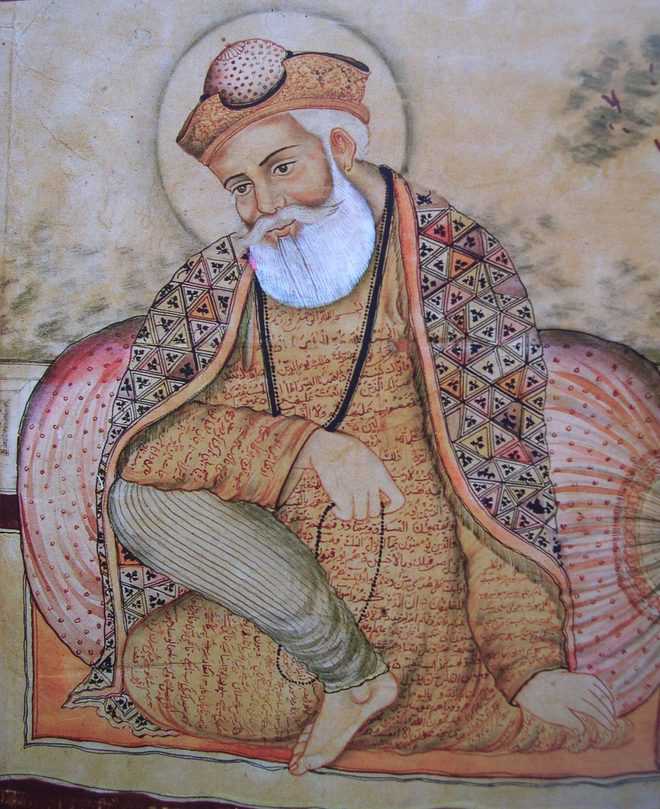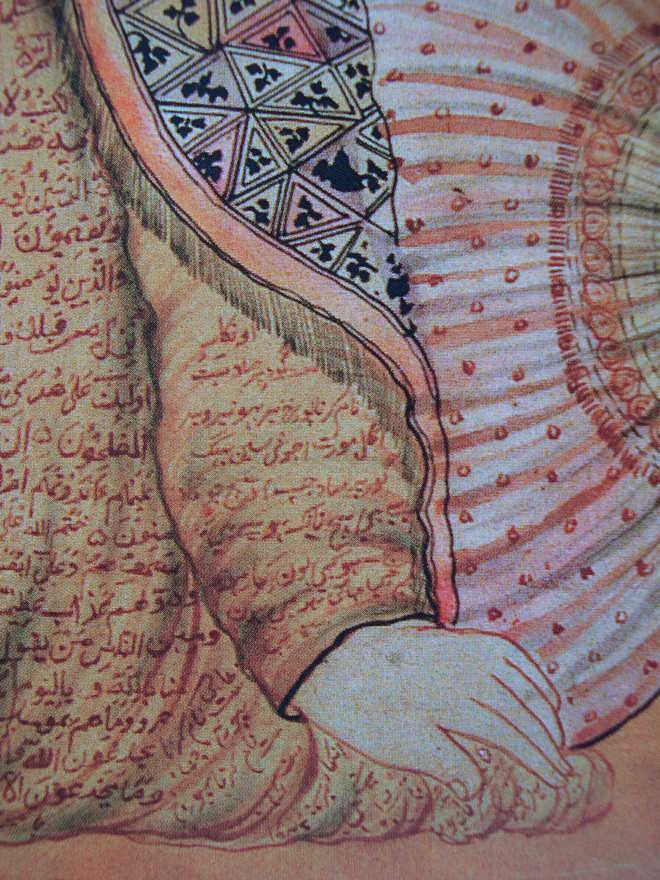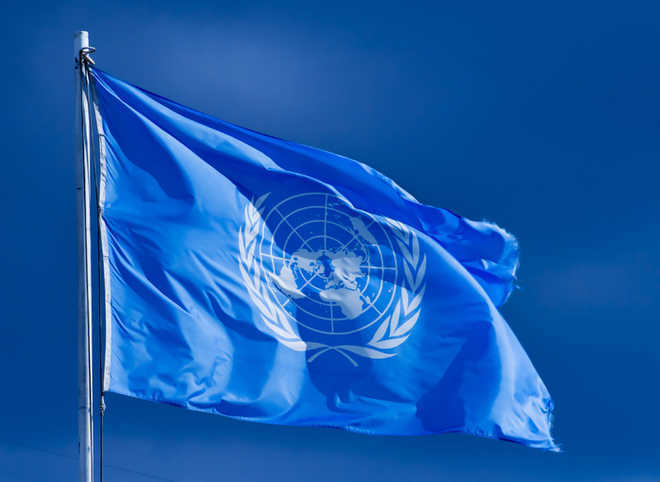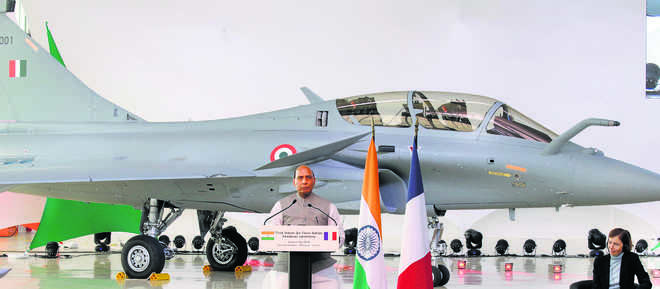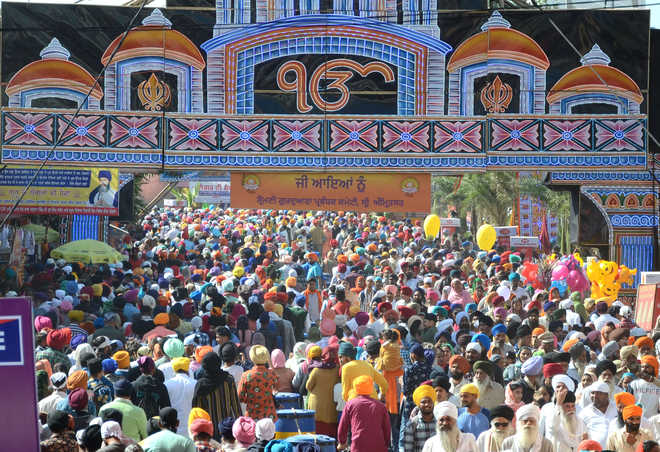
Thousands of devotees visit Sultanpur Lodhi during ongoing 550th Guru Nanak gurpurab celebrations on Saturday. Tribune Photo Sarabjit Singh
Sultanpur Lodhi (Punjab), November 10
Tens of thousands of devotees from across the globe are converging every day in this holy town associated with the founder of Sikhism, Guru Nanak Dev, whose 550th birth anniversary falls on Tuesday.
It is here that the Sikh first master gained enlightenment at the end of the 15th century.
Organisers say the desire of devotees is to pay obeisance at the historic Gurdwara Ber Sahib and to have a ‘ashnaan’ (dip) in Kali Bein. The devotees are feeling fortunate to have ‘choola’ (sip of water) from the holy Bein.
It is believed that Guru Nanak disappeared into the waters of the Bein rivulet, reappearing three days later as the enlightened Guru. The ground of Gurdwara Ber Sahib marks the spot, where Guru Nanak entered the rivulet.
Prime Minister Narendra Modi on Saturday morning paid obeisance at the historic Ber Sahib Gurdwara, before heading for Dera Baba Nanak to inaugurate the Kartarpur Corridor and flag off the first lot of pilgrims to visit Kartarpur Sahib Gurdwara in Pakistan’s Punjab province.
The three-storey gurdwara was built by the ruler of Kapurthala in the mid 20th century and features slender octagonal pillars, a marble sanctum and stucco designs at the entrance.
A grand light and sound show that uses ultra modern techniques to narrate the life and philosophy of Guru Nanak Dev is the star attraction for the thousands of devotees attending the commemoration.
Medical lounges at Sultanpur Lodhi, some 200 km from the state capital Chandigarh, have been proving a boon for the pilgrims with more than 7,800 patients getting out-patient department treatment, officials said.
A team comprising 1,000 paramedical staff and doctors working round-the-clock to ensure quality health services to the pilgrims.
An exhibition showcasing the life and teachings of the first Sikh Guru setup near Guru Nanak Darbar ‘pandal’ by the Punjab Tourism and Cultural Affairs Department, in collaboration with the Punjab Digital Library, has become one of the main attractions.
It exhibits coins related to the Sacha Sauda period, coins and more than 150-year-old utensils related to Baba Banda Singh Bahadar and Maharaja Ranjit Singh, Sakhi’s related to Guru Sahib, miniature and other paintings, and photographs related to Guru Nanak Dev.
Special functions here were dedicated to Bebe Nanki, sister of Guru Nanak, on Saturday considering the respect accorded to women in ‘Gurbani’ by Guru Nanak Dev.
The other highlight is the Punjab School Education Board’s exhibition of paintings and calligraphy by students from government schools to emulate the philosophy and life of Guru Nanak Dev.
Harpreet Singh, a Class XI student of Government Senior Secondary School at Sukhpur in Barnala district, has focussed on the greatness of ‘Japji Sahib’ through his calligraphy.
Another student, Kuldeep Singh of Class IX of Government High School at Mauran in Barnala, has sought to attract attention towards the voice raised by Guru Sahib against social evils.
The students have also highlighted Guru Nanak Dev’s preaching and the universal principle of “Kirt karo, naam japo, wand chhako”, which means “earning an honest living, chanting the holy name and sharing with others”.
The state had secured an approval from the Centre for its Rs 271-crore proposal to develop Sultanpur Lodhi as a heritage town in a 50:50 partnership, a government spokesperson told IANS.
The Centre has also cleared a proposal for setting up a Centre for Inter-Faith Studies at Guru Nanak Dev University in Amritsar at a cost of Rs 175 crore.
The state has also proposed establishment of a Pind Babe Nanak Da museum in around 75-80 acres, at a cost of Rs 300 crore, he added.
For the pilgrims visiting Sultanpur Lodhi, a tented city, spread across 277 acres, for 35,000 people has been erected at a cost of Rs 53 crore. The tented city has 2,200 temporary toilets and 10 water vending machines, besides 18 parking sites.
Special trains, including Prakash Purab Express from Delhi to Sultanpur Lodhi, has also been made operational.
Punjab has also made efficient arrangements for the running of special buses as well as e-rickshaws free of cost for the visitors to Sultanpur Lodhi.
Sultanpur Lodhi is dotted with gurdwaras commemorating events from Guru Nanak’s life.
Along with Gurdwara Bebe Nanaki, built to honour Guru Nanak’s sister, is the Gurdwara Sant Ghat, about two km upstream of Ber Sahib, where he emerged from his three-day immersion in the Bein.
Hatt Sahib honours the grain store, where Guru Nanak was employed; and the 13 weights, used by the Guru Nanak to measure provisions are preserved here.
The prison cell, where the Guru was imprisoned under false charges is Gurdwara Kothri Sahib; and Guru ka Bagh is where Guru Nanak lived with his wife, Sulakhni, and their two sons, Baba Sri Chand and Baba Lakhmi Chand.—IANS











